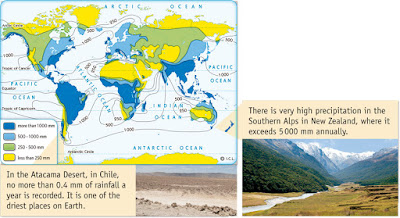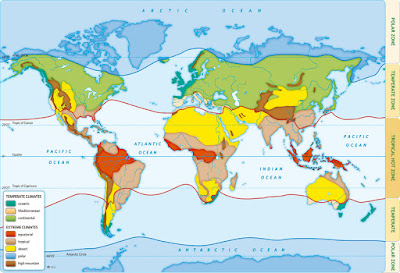Key questions about Earth's climates
TEMPERATURE:
- Temperature varies according to latitude, altitude and distance from the sea
- Climate zones are determined by latitude, and consist of the tropical zone, temperate zones and polar zones
PRECIPITATION:
- Precipitations are determined by: the climate zones (latitude), the wind and atmospheric pressure (low pressures or depression and high pressures or anticyclones), and the relief (orographic precipitation)
EARTH'S CLIMATES:
The climates can be classified into temperate (oceanic, mediterranean and continental) and extreme (equatorial, tropical, warm desert, polar and high mountain).
- TEMPERATE CLIMATES:
- Oceanic, with abundant rainfall throughout the year
- Mediterranean, with mild temperatures throughout the year and scarce rain in summer
- Continental, with a great thermal oscillation between winter and summer.
- EXTREME CLIMATES:
- The warm equatorial and tropical climates have high temperatures throughout the year. In the equatorial climate, the rains are very abundant (more than 1000 mm) and constant, while in the tropical there is a rainy season and a dry one.
- The warm desert climate is located near the tropics. Its annual rainfall is very scarce (less than 250 mm).
- The climate of the cold zones develops in the polar areas, with temperatures frequently below 0ºC. The high mountain areas, above the 2 500 m altitude, also have a cold climate.
In Spain there are five types of climates: oceanic or atlantic, mediterranean, continental mediterranean, mountain and subtropical (in the Canary Islands).
 |
| Vicens Vives |
 |
| Vicens Vives |
 |
| Vicens Vives |
 |
| Vicens Vives |



Comentarios